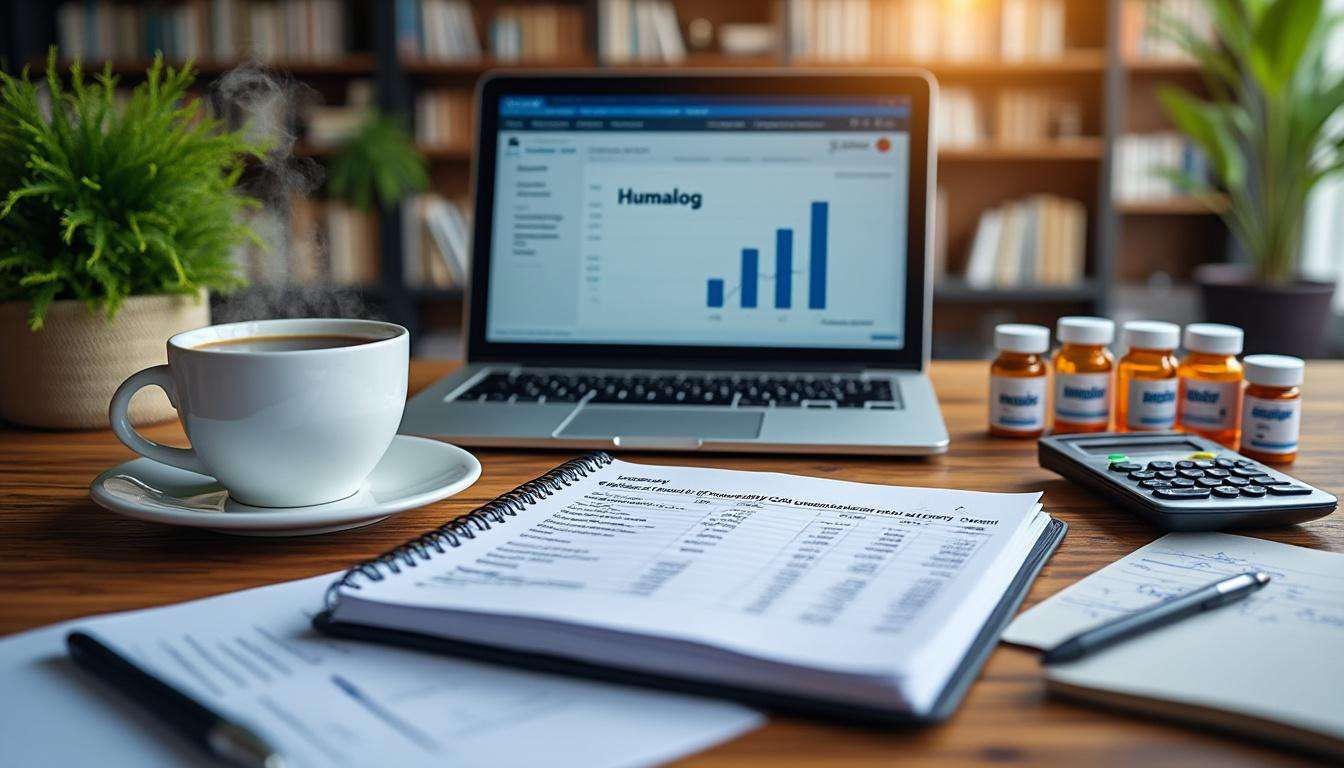Humalog Cost Guide: Save Big on Insulin 2025
Brief: This guide from InsuranceProFinder explains how Humalog pricing works, which savings tools to try, and concrete steps to cut out-of-pocket costs in 2025. Follow the practical tips and check the assistance programs that may apply to your situation.
Humalog Cost Overview and Main Price Drivers
The price you pay for Humalog depends on product form, insurance, pharmacy, and any equipment you need. Typical formats include vials, KwikPen devices, Junior KwikPen, Tempo Pen, and cartridges, each carrying different list and retail prices.
- Factors affecting cost: treatment plan, device type, location, and pharmacy choice.
- Insurance variables: formulary tier, copays, and prior authorization requirements.
- Out-of-pocket range: recent market shifts mean some patients pay as little as a $35 copay with cards, while others without coverage face much higher retail prices.
Example: Maria, a 34-year-old teacher with Type 1 diabetes, found her monthly cost dropped notably after switching from single-fill retail to a 90-day plan and combining a manufacturer card with a coupon. Her case shows how small administrative steps can change yearly spending.
Why biologics and biosimilars change Humalog pricing
Humalog contains insulin lispro and is a biologic. When biosimilars enter the market, competition can push prices down because biosimilars require less costly approval testing than originator biologics.
- Biologic vs biosimilar: biologics often carry higher initial prices due to R&D and exclusivity rights.
- Biosimilar options: look for insulin lispro biosimilars or biosimilar mixes that insurers may prefer for cost reasons.
- Insurance impact: some plans cover only the brand, only biosimilars, or require prior authorization to switch.
Key insight: discussing biosimilar alternatives with your prescriber may reduce costs, but always confirm coverage details first.
Practical Ways to Lower Your Humalog Costs
Several proven strategies can reduce what you pay for Humalog. Combine manufacturer programs, coupons, and pharmacy options to maximize savings.
- Use savings cards: the Insulin Savings Card and manufacturer programs can cap copays for eligible patients.
- Try coupon marketplaces: compare offers from GoodRx, RxSaver, Blink Health, and DoseWise listings to find the best price for your device.
- Consider mail-order and 90-day fills: a 90-day supply via mail-order often reduces per-unit cost and trips to the pharmacy.
Practical example: a patient using a GoodRx coupon and a mail-order 90-day supply reduced refill frequency and saved an estimated 30% compared with single-fill retail pricing.
Action point: always check multiple coupon sources—GoodRx, RxSaver, Blink Health and manufacturer offers—before filling a prescription.
Manufacturer and third-party programs to explore
Manufacturer programs often provide the largest, direct discounts. Eli Lilly runs the Lilly Insulin Value Program and the Lilly Cares Foundation, which can help eligible patients. Independent resources like Medicine Assistance Tool and NeedyMeds list additional options.
- Call manufacturer support: 833-808-1234 for program eligibility with Eli Lilly.
- Check DoseWise and GlycoCheck services for adherence tools that sometimes partner with savings initiatives.
- Compare coupons: some programs limit monthly fills or number of uses—read terms carefully.
Insight: combining a manufacturer cap with a pharmacy coupon often yields the best immediate savings, but verify annual limits on program usage.
Understanding insurer rules can prevent surprise bills for Humalog. Plans may require prior authorization, step therapy, or prefer biosimilars to control costs. Taking a proactive approach avoids denied claims and full retail charges.
- Verify prior authorization requirements with your plan before starting treatment.
- Ask the prescriber to submit supporting medical necessity documentation if required.
- If uninsured or underinsured, explore patient assistance via the Lilly Cares Foundation and third-party resources.
Case study: when Maria’s insurer requested prior authorization, her clinic submitted documentation, avoiding a full retail charge and ensuring coverage continued without interruption.
Step-by-step checklist to minimize insurance friction
Follow these steps to reduce delays and unexpected costs when obtaining Humalog:
- Confirm formulary placement and whether brand or biosimilar is preferred.
- Ask about prior authorization and submit required clinical notes early.
- Combine insurance coverage with coupons or manufacturer programs when allowed.
- Consider mail-order if your plan offers lower co-insurance for 90-day supplies.
Final insight: staying organized—tracking approvals and documenting calls—saves time and money when dealing with insurers.
How much can a Humalog savings card reduce my copay?
Savings vary by program and eligibility. Some manufacturer cards and patient assistance programs cap copays (for example, down to around $35), while coupon sites like GoodRx or RxSaver can produce substantial discounts on single fills. Confirm program limits and insurance interactions before relying on a single solution.
Are biosimilars safe alternatives to Humalog?
Biosimilars of insulin lispro are engineered to be highly similar to the originator and are considered safe and effective. Discuss with your prescriber whether a biosimilar suits your regimen and check your insurance plan for coverage differences.
Can I get a 90-day supply of Humalog?
Many insurers and mail-order pharmacies permit a 90-day supply if authorized by your prescriber. This often lowers per-unit cost and reduces pharmacy trips. Check with your insurer about eligibility and possible cost savings.
Who should I contact for manufacturer assistance?
For Eli Lilly programs, call 833-808-1234 to learn about the Lilly Insulin Value Program and the Lilly Cares Foundation. Third-party resources like Medicine Assistance Tool and NeedyMeds also list options.


